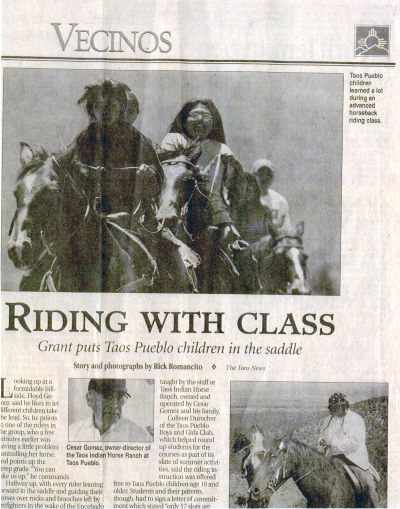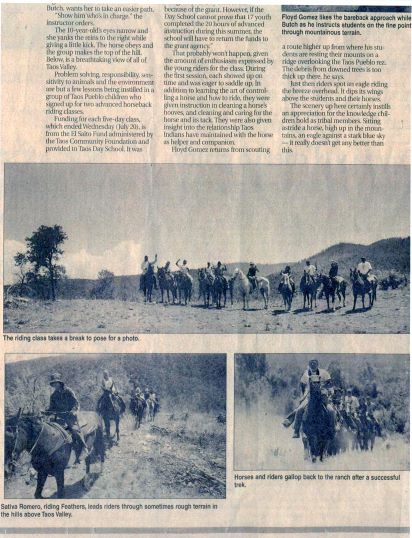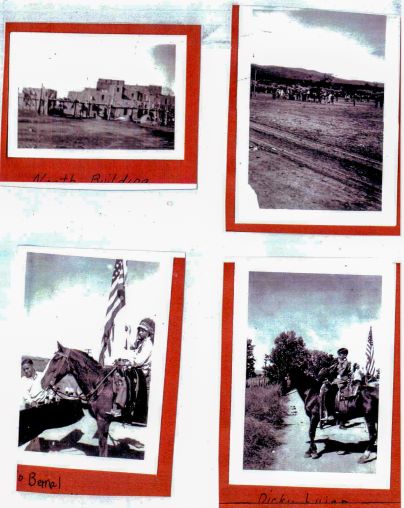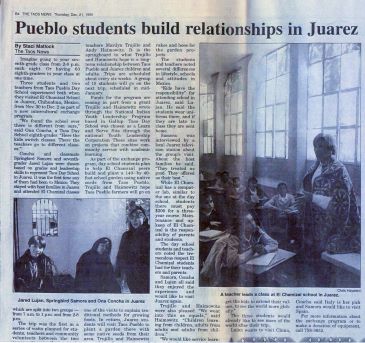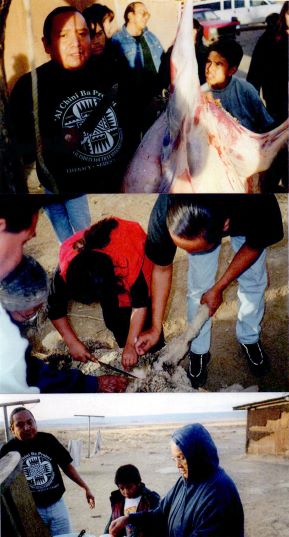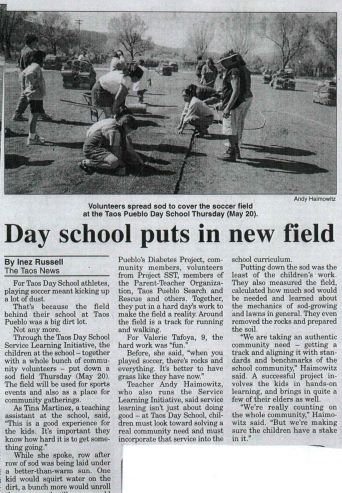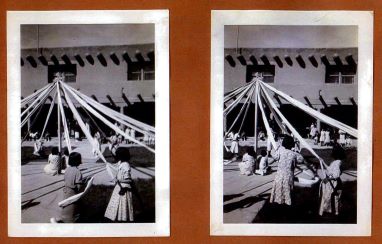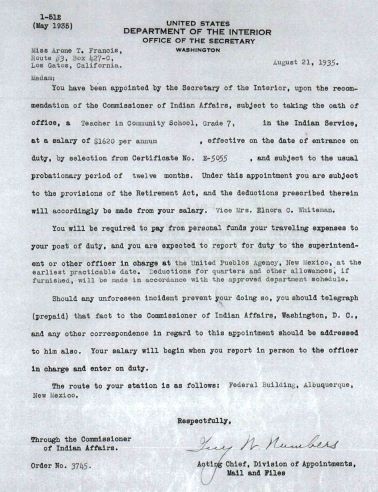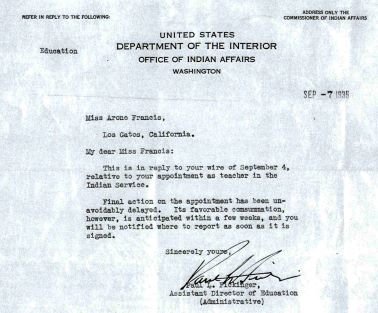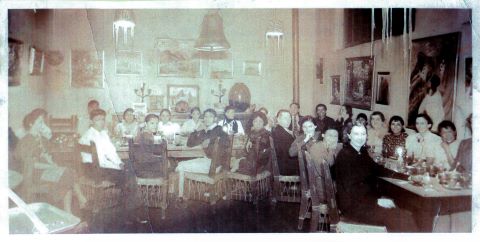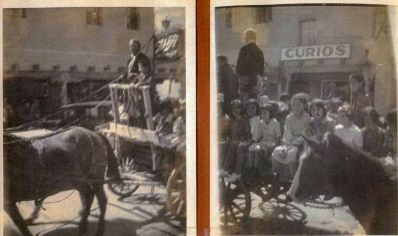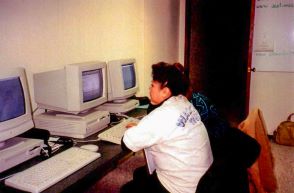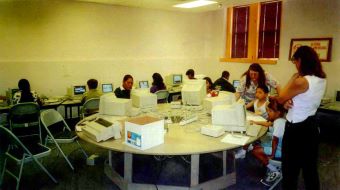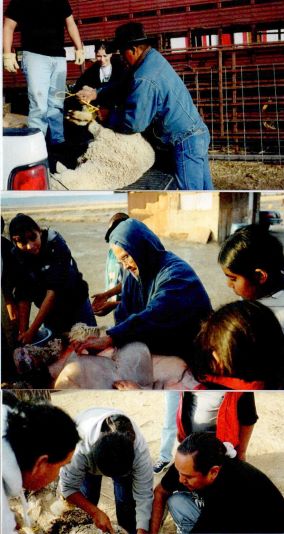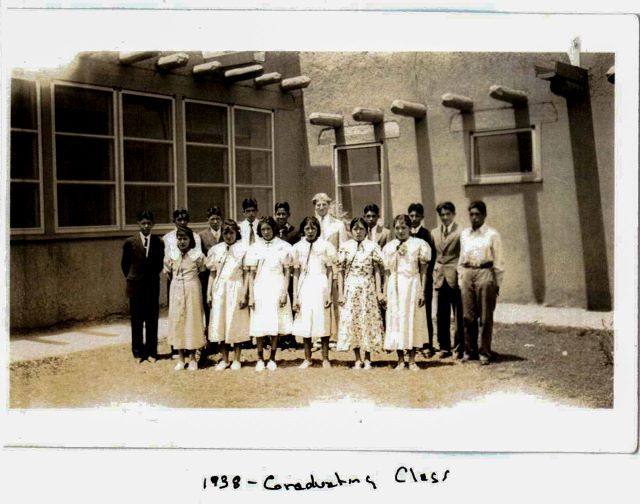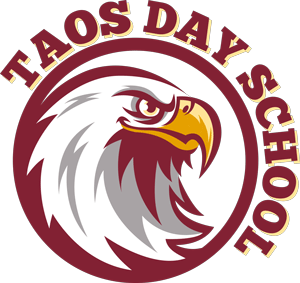History
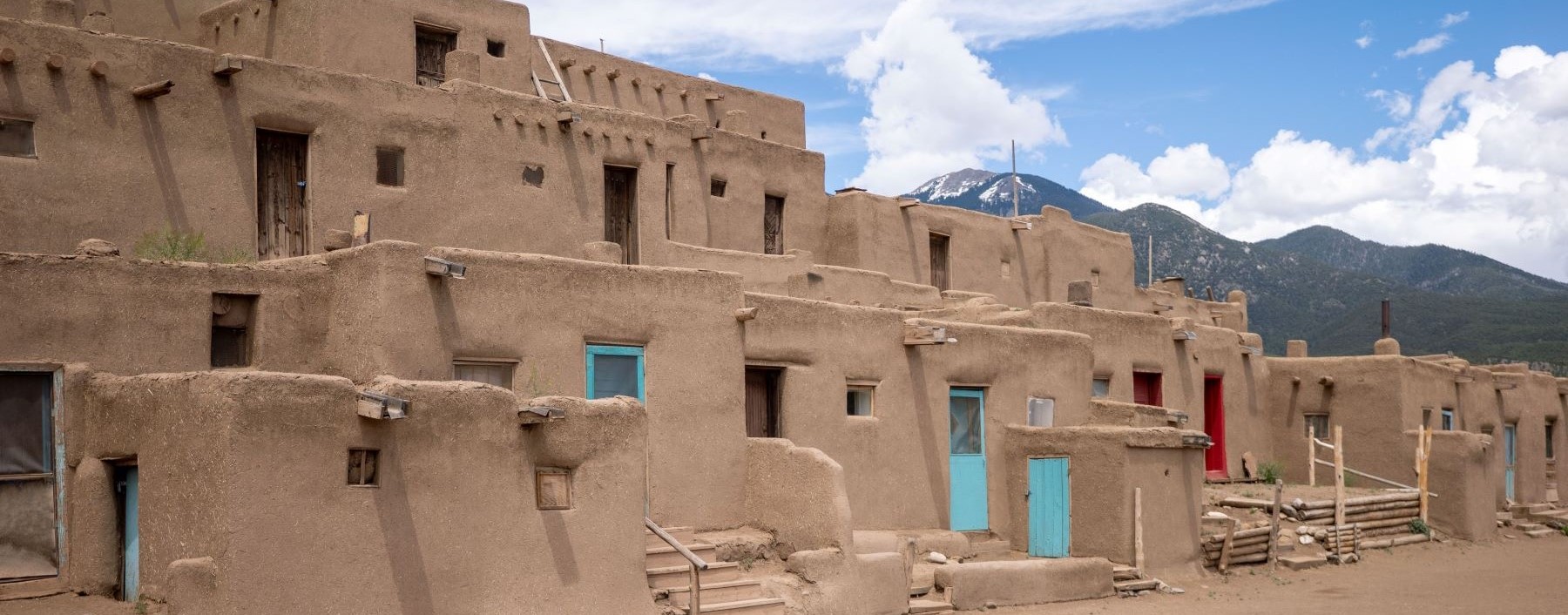
The Story of Taos Day School
A Catholic mission school was the earliest academic initiative established on the Taos Pueblo in the late 19th century. The school operated out of the Pueblo’s old community building from 1893 until the United States government moved the school to one of the community houses. In 1910, under the supervision of the U.S. government, the mission school became Taos Day School and Mr. Neal became its first teacher. He was succeeded by Mrs. Dwire who served for 15 years.
Taos Day School was started at its current location, in the northernmost region of Taos Pueblo, New Mexico. Tribal leaders and elders cast a vision of educated Pueblo community members working and collaborating with the Bureau of Indian Affairs for access to contemporary educational programs. Taos Day School began as a quiet community school that grew into a thriving learning center where the expression and preservation of the Tiwa language and culture would remain unbroken and omnipresent.
Taos Day School has been the academic beneficiary of Taos Pueblo culture and heritage for over 100 years. A legacy of excellence in education developed through the generations, despite any limitations in teaching resources and campus facilities. This legacy was passed down through the decades by faithful educators, such as Mr. Hollander, Ms. Howard, Mr. Lauer and Ms. Pacheco, who all left indelible marks on their students. Many alumni returned to Taos Day School as teachers for the next generations to come.
Close familial connections are the lifeblood of the school community, inspiring and informing the hearts and minds of generations of young scholars. Constant growth and development were fueled by pride in the Pueblo and the strength of its relationships. Indigenous thoughts and ways of learning are protected behind thick adobe walls and experienced by every student, teacher, parent, and visitor to Taos Day School’s campus.
Under Our Roof
Vigas /vee-guh/: the wooden beams supporting the roof, often replicated in Pueblo Revival architecture
The solid vigas symbolize the protection and support that the Pueblo tradition provides and its deep connection with the land and the community. Families were eager to assist in building the main structures that carried the roof's weight. To participate in the construction of Taos Day School, parents/guardians and community members chopped down fir trees and provided their woodworking skills. These wooden vigas remain a key characteristic of ancestral Pueblo construction, which resonates throughout the school building.
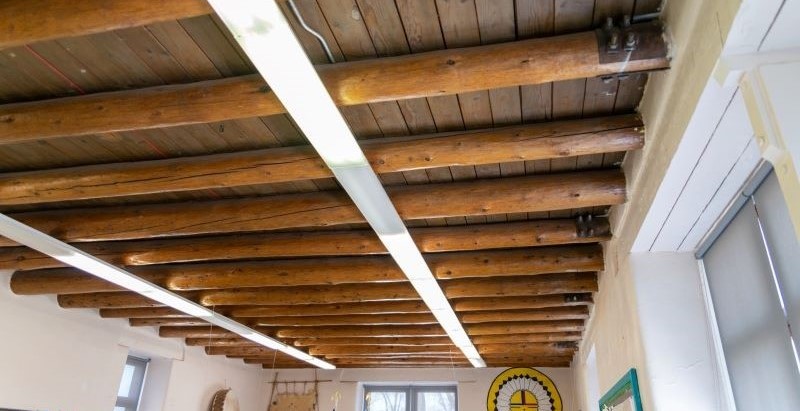
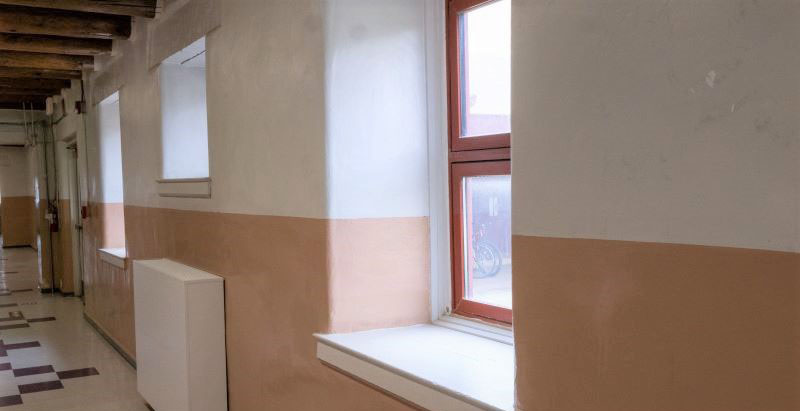
In addition to carrying the weight of the adobe roof and three to four foot-thick exterior walls, vigas support the latillas (strips of wood) upon which the roof is laid. After decades of developing, reconstructing and integrating, Taos Day School’s Puebloan architecture endures as a reminder of Tiwa tradition. The school building has kept students secure while allowing them to live, learn and connect with their ancestral Pueblo culture.
Before the 1980s, student-athletes participated in basketball competitions within the tight restrictions of an unregulated basketball court. Without the sitting room for bleachers and chairs around the court, the home crowd lined up against the walls to cheer on the Eagles. By 1986, the Community Center, which included a regulation-sized basketball court, allowed students to comfortably compete and develop their basketball and volleyball talents.
Taos Day School’s reconditioned cafeteria was another landmark enhancement in the school’s growth. Tribal staff members were able to prepare traditional meals en masse each day. Breakfast and lunch became highlights for students. Some alumni still reminisce about the aroma of the traditionally baked breads drifting from the kitchen. Traditional food preparation was optimized and the Eagles’ cafeteria became a favorite setting for cultural nourishment.
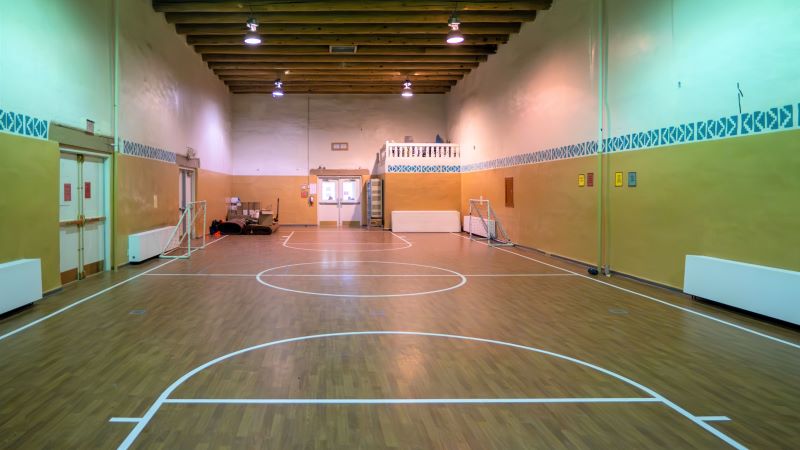
In the 1990s Taos Day School Students were immersed in the concept of Service Learning. Service Learning is taking an authentic community needs and aligning it with core subject areas. Students built community gardens, participated in water ecology classes, traveled to other indigenous schools and non-indigenous schools, from as far north as Pine Ridge and Rose Bud in South Dakota and as far south Ciudad Juárez, Mexico. Students became Service Learning Ambassadors with their connections to land stewardship. addressing community needs, serving their own as well as other indigenous communities.
"I loved eating the homemade breakfasts and lunches.
[I remember] I could smell the bread cooking."
— Valerie Suazo, kindergarten teacher
Inside Our Walls
The Taos Day School learning environment was borne of practical teaching resources to guide students on diverse educational journeys. With the additions of portable classrooms, a computer lab, the home economics cottage, a gymnasium, a new library and additional facility upgrades, students realized new standards in Native education. Student scholars started taking advantage of the pragmatic and hands-on curriculum.
Taos Day School initially served first through 10th-grade students until switching to teach kindergarten through eighth grade. The holistic learning program met students’ academic, social, emotional, cultural and spiritual needs. Families, faculty and community members gathered on campus for a variety of programs and cultural events, including dances, bake sales, powwows, and other community events.
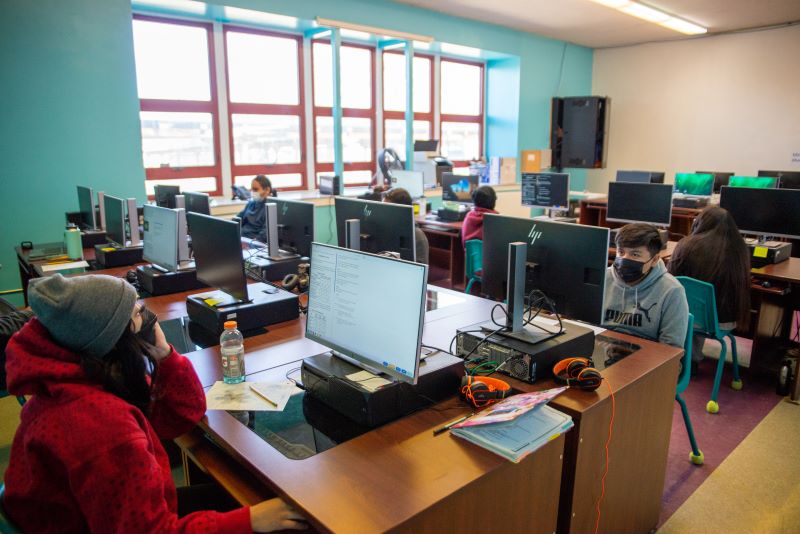
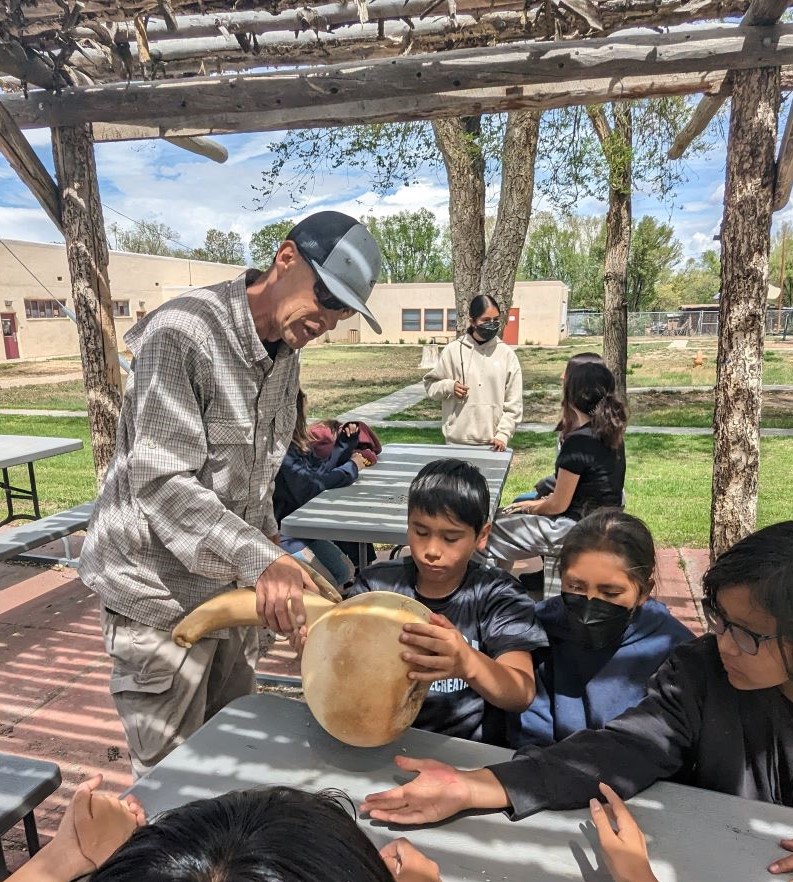
Taos Day School musicians were recruited to join the Taos Day School marching bands, who were invited to perform at national events like the Cherry Blossom Festival in Washington, D.C. Dancers and drill teams represented the pueblo as they traveled to perform for, and learn from, other Tribes. Students embraced new technologies, computer sciences and cultural arts, and were regular participants in the annual science fair.
Extracurricular activities and community outreach became an integral part of the Taos Day School educational program. Students participated in the Bureau of Indian Education activities that include Science fair, Battle of the Books, etc. which allows students and staff to travel to other schools and communities. Snowboarding, ice skating, swimming, martial arts, dance, Tai Chi and gymnastics were a few of the activities afforded by an evolving learning strategy.
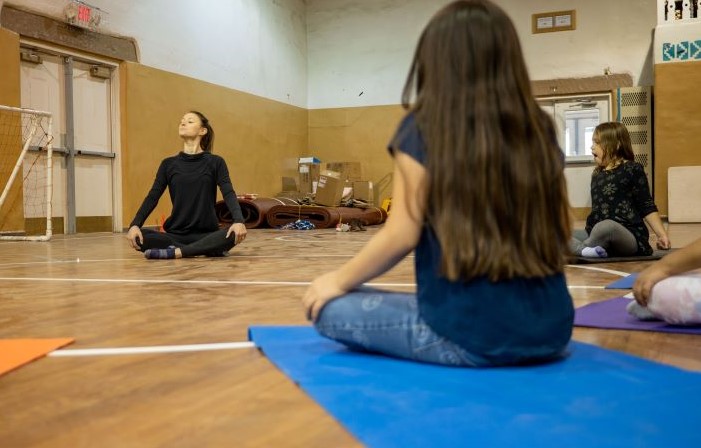
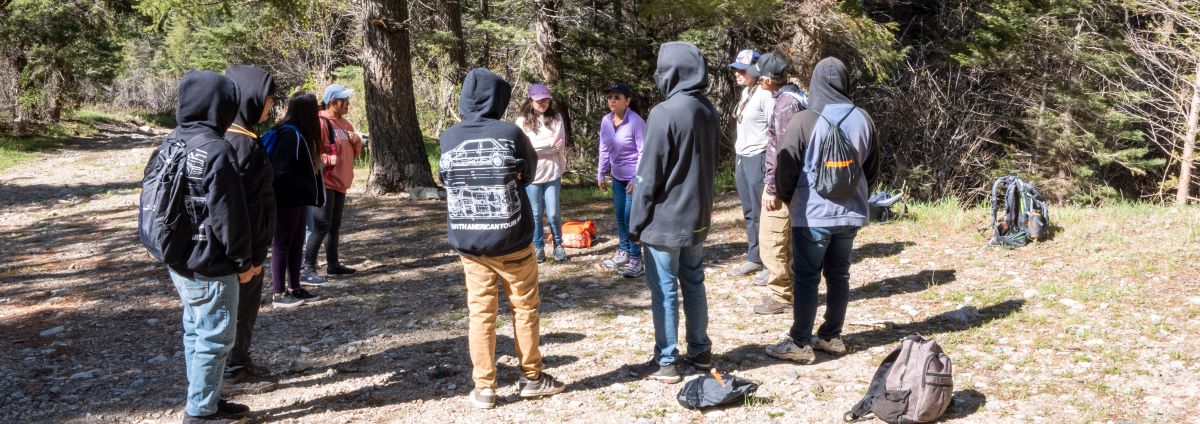
Taos Day School students started benefiting from the “C.R.E.A.T.E. (Culture, Recreation, Education, Arts, Technology, Experience) Success Out of School Programming,” an afterschool learning program where activities like mountain biking, skiing, artisan workshops, tutoring, enrichment programs, media arts and much more were made available to students.
Within Our People
Taos Day School alumni do not easily forget the close-knit school community. Many have become the parents, grandparents and great-grandparents of Taos Day School's current student body and have lived to see a fourth generation attending the same school. Many of the student-athletes, -leaders, -musicians, -dancers and -artists have passed down those same talents and skill sets to their Pueblo descendants.
Tiwa language and culture classes became a significant portion of the school’s curriculum. Taos Day School was created to keep its Native language and culture alive by making the expression of Native names, culture, family traits, traditional foods and community part of the classroom experience. Through participation in projects like Taos Day Media Literacy and the Taos Day School Literacy Magazine, students were able to identify and bond with their culture and community.
"Language is the first foundation of community and support.
When a child comes into school, the first thing is to make them feel proud."
— Nola Romero-Miller, first-grade teacher
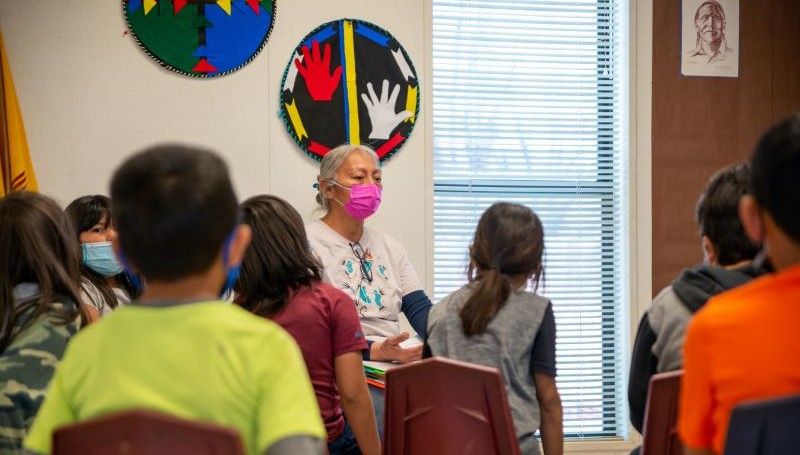
Taos Day School teaches students with principles that honor their culture and tradition. It was common for students to discover that many of their classmates were blood relatives. However, graduating from Taos Day School was bittersweet, like losing fellow travelers with whom you started an educational journey. The inclusion and immersion of Tiwa language and culture helped students faculty, and community strengthen their connection.
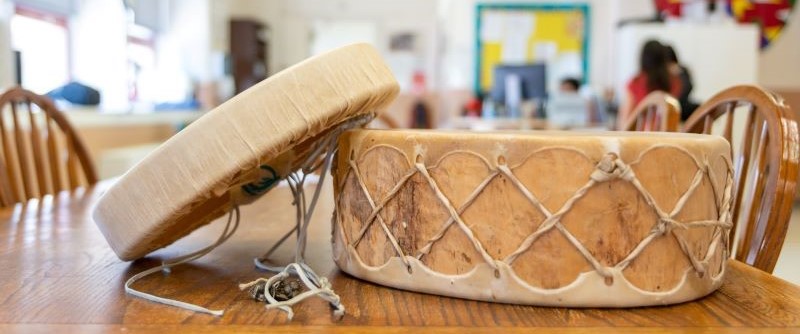
Outside Our Pueblo
The Taos Pueblo community cooperated with national organizations like the Lions Club, Rotary Club, National Corporation of Service, the local agencies such as the Taos Community Foundation and Field Institute of Taos, to expose students to new skill sets and environments. With the guidance of Pueblo Tribal members who served as scoutmasters, schoolteachers and coaches, students were introduced to new life experiences and general fields of knowledge. Taos students also competed with and against schools outside the pueblo in literacy projects such as Battle of the Books.
"The greatest need is connecting Native children to Native children, Tribe to Tribe."
— Andy Haimowitz, Principal
Taos Day School students have graduated to eventually become Tribal Governors, Warchiefs, Councilmen, as well as scientists, impactful educators, artisans lifelong learners, and much more. TDS students are prepared to enter diverse career paths through project-based, hands-on learning experiences, such as metalworking, woodworking, cultural artisanship, culinary arts, and art design.
Learn and Serve America helped build bridges between Pueblo communities and generations while teaching students the values of lifelong connections, learning, and serving other Native and Non-Native communities. Taos Day School students learned the differences in the cultures, such as the simple distinctions in how hornos are made, which completely changed how bread is baked. Students also learned skills of creating hay bale bleachers and participated in service activities throughout native lands and beyond.
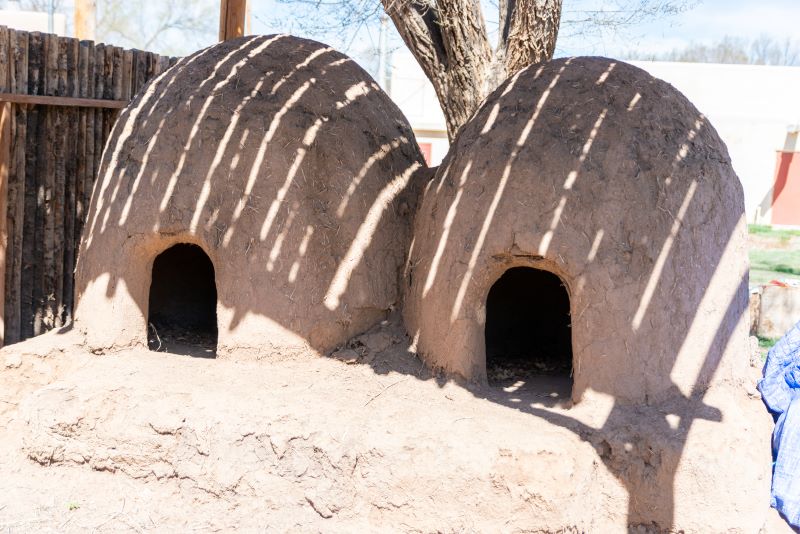
Throughout the late 20th century, Taos Day School’s connection with the Rotary Club, Lions Club, and other civic organizations has helped continue the generation of students practicing land stewardship and create connections through the practice of land stewardships. This partnership promoted the values of integrity, peace, as well as cultural and traditional values that continue to serve the Taos Pueblo community.
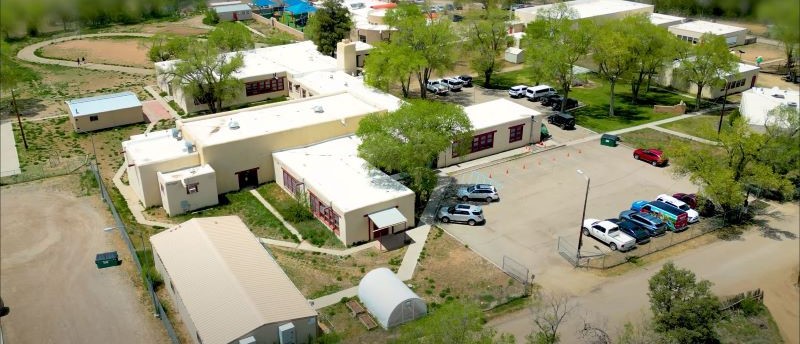
Blast from the Past
